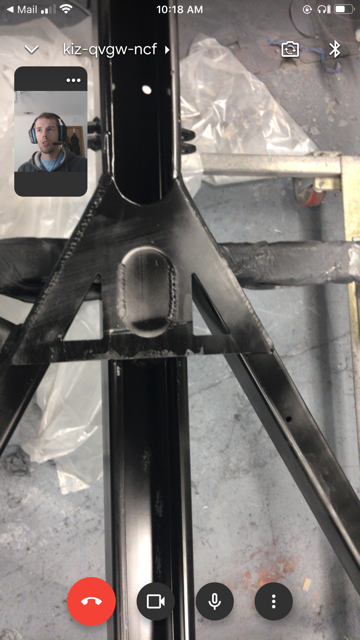F-6
Prototype and Production Trailers Designed with JDID for FORT Campers
I have been the lead on this project since early on. This was my introduction to sheet metal part design, as well as managing a CAD database that relies entirely on block files in SolidWorks. We continue to support FORT Campers as they improve their current design, and expand their offerings.
Prototype
We worked closely with FORT Campers to develop their vision of an overlanding tent trailer. The design process began with a rough outline of the trailer components: Chassis, Front Box, Tub with two access doors and a lid, and Spare Carrier. From there JDID was given some room to propose basic profile styling ideas. We focused on providing a unique aesthetic that didn’t detract from function. With a profile chosen, I got to work on developing CAD models of the paneling.
Build Support
We made sure to stay accessible for video calls and in-person support. This allowed us to catch potential problems and trouble shoot as the build progressed. I kept the CAD database current by using blocks in SolidWorks to edit all parts in an assembly with only a handful of linked drawings.
Analysis
We sought ways to reduce weight, increase accessibility, and maximize production efficiency.
I have never owned a trailer, and I am certainly not the expert on trailer layouts. However, I have plenty of methods for quick learning. In this case I had the client show me how he had planned on having customers interact with the trailer.
What I saw:
The tub lid would be inaccessible with the rooftop tent open
The primary storage required lifting and awkwardly reaching into the tub
The front box could serve the customer better if exclusively used for storage, and not electronics/ batteries
My proposal:
Scrap the tub lid: This saved a lot of weight, removed the complex bends and frame required to build a sturdy lid, and allowed the internal height of the trailer to grow by 2.5”
Reconfigure the tub interior to work entirely on drawers
Move the batteries and electronics to the area where the storage used to be
Production
We learned a lot during the prototype build. Feedback from the client and sheet metal shop allowed me to make quick adjustments to the production model. The result was vastly improved model files that were sent out for manufacturing before the prototype even left the shop.

















